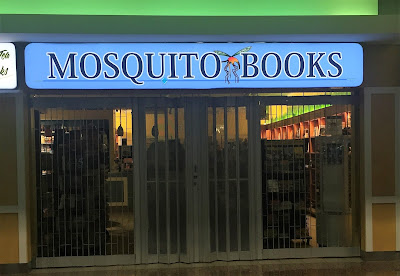I have a dear Catholic friend named Diane who, about a year ago, invited me to go on a retreat with her to a Benedictine monastery in Valyermo, California, just over an hour from where we live. It was somewhat out of my comfort zone but exactly the type of interfaith experience I have learned to value, so I accepted her invitation. The earliest my schedule and the retreat schedule matched up, however, was the second week in July, so I had to wait a while.
It was worth the wait, and in fact I think I will go again if given the opportunity. I found at least ten things that visitors need to see/experience when at St. Andrew's Abbey in Valyermo.
1. THE CHAPEL
St. Benedict, who lived in Italy from c. 480-543 AD, is often called "The Founder of Western Monasticism" and is the Patron Saint of Europe. The Benedictines observe a strict daily schedule revolving around gathering in the monastery chapel five times a day for prayer. Guests are not required to attend all (or even any) of those prayers, but I tried to go with Diane (who went to them all) to two or three each day. The focus on prayer is one of the things that makes visiting St. Andrew's a unique spiritual experience.
Resounding peals of the bell standing outside the chapel call the monks and guests to prayer four times a day. (Out of respect for sleepy guests, the monks don't ring the bell for the earliest prayer at 6:00 AM, which I confess I never attended).
This is the daily schedule:

6:00 AM:
VIGILS (The first communal prayer of the morning)
6:30-7:30: Lecto Divina (Contemplative scripture study)
7:30:
LAUDS (Morning prayer)
8:00: Breakfast (Eaten in total silence, called "Grand Silence")
8:30-11:30: Assigned labor or study (This was the first of our two daily session of lecture/discussion for the retreat)
12:00 PM: Conventional
MASS
1:00: Lunch with guests
1:30-4:00: Assigned labor or study (Session two of retreat lectures and discussion)
4:00-5:30: Study, rest, exercise
5:30: Lectio Divina
6:00:
VESPERS (Evening prayer)
6:30: Dinner (in silence)
8:00-8:30: Community recreation
8:30:
COMPLINE (Night prayer)
The Benedictine liturgy and music focuses on the Psalms, which the monks sing through completely (even the more violent or salacious psalms) every month or so as part of their prayer services. One of the monks is the "lead" singer or cantor (I'm not sure if that is the correct term). He sings his part, and then the other monks and congregants sing other parts, sometimes a capella, sometimes accompanied by a small organ.




















































